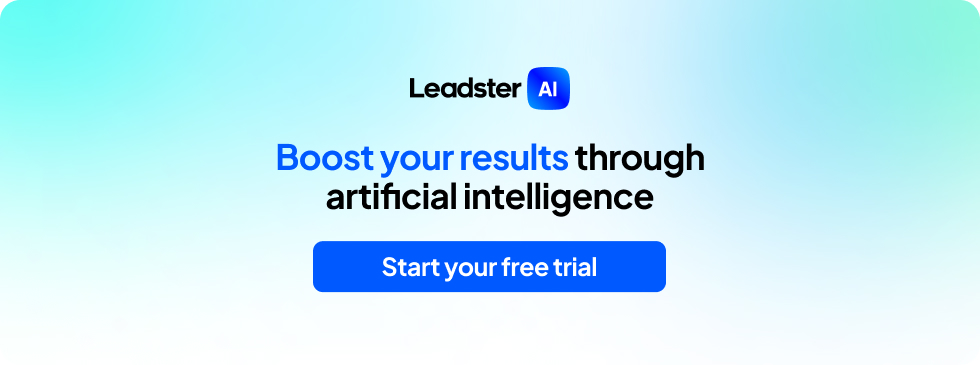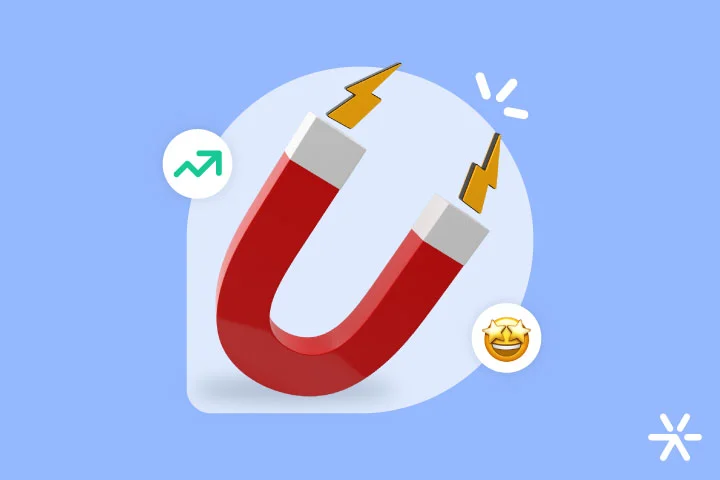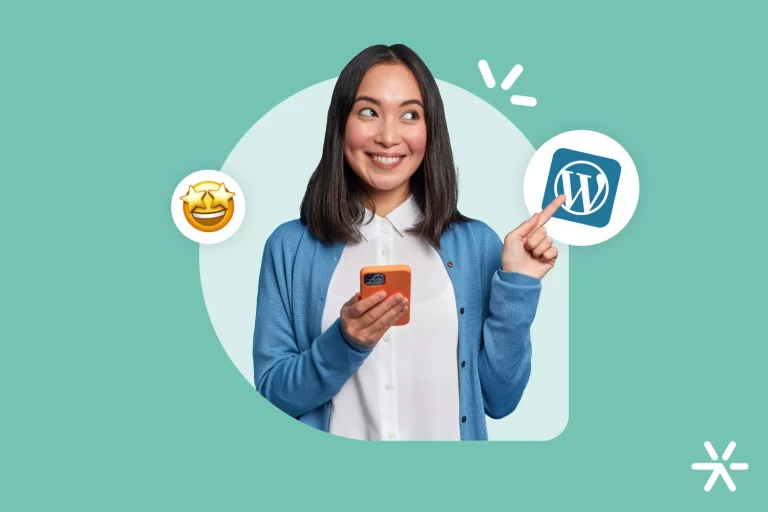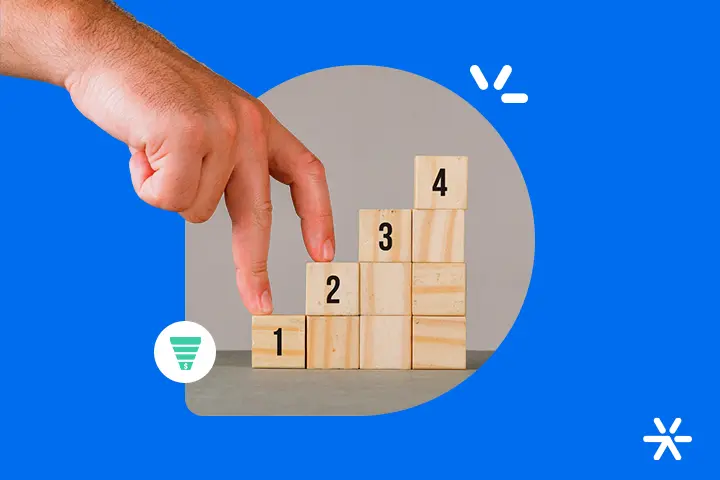Inbound leads: complete guide from generation to sale
Inbound leads are the lifeblood of digital marketing strategies today.
They are what enable several other techniques to work, such as marketing for blogs, podcasts, YouTube videos, etc.
This is because all of these strategies have the main objective of generating leads .
Without them, nothing in digital marketing makes sense, and all these networks would be very different.
Without inbound lead generation, even Google would suffer.
Writing texts and tutorials on blogs and not generating leads? Why?
Thinking about it this way, inbound lead generation is one of the biggest drivers of content on the internet.
And you? How do you generate and nurture your inbound leads?
And then, when it comes time to sell, what do you do?
In this text we provide a complete guide for these three steps.
All ready?
So let’s start:
What is an inbound lead?
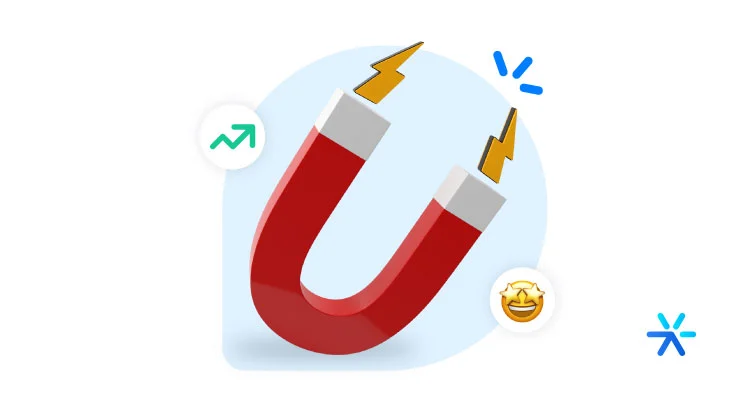
An inbound lead is one generated from an inbound marketing strategy.
The term refers to someone who has left their information with your company and allowed them to send personalized content via email or make contact through other means.
Inbound leads are generated from content marketing , one of the most fundamental inbound marketing strategies.
It works like this: your company creates relevant content, according to what people are searching for on Google, YouTube or any other media.
These people, while reading your content, are approached by chatbots or impacted by banners that offer more in-depth material within the same topic.
And to download this material, this person will need to leave their contact information: their name, their email and other lead qualification questions you choose.
That’s it: this person is now an inbound lead.
Of course, there are other ways to convert leads.
Invite people to a WhatsApp group, offer a discount coupon, hold webinars, exclusive access to podcasts, etc.
But the basics still apply: an inbound lead is that person who found your content via inbound marketing, became interested in it and left their information to consume it.
What is inbound marketing?
Inbound marketing, also called attraction marketing, is a strategy that seeks to attract leads to your website through good content and in-depth content.
The inbound strategy works through a sales and marketing funnel.
Its operation is simple: all sales happen through steps that your customer goes through.
At the top of the funnel , he is attracted to your website and your brand through content marketing .
He searches for something related to his work or his daily life, and finds resources that your brand offers.
For example: let’s assume you work in B2B sales of office furniture.
When someone searches Google, YouTube or social media for “MDF office furniture”, your brand is there, talking more about this product.
Still at the top of the funnel, your brand converts these visitors into leads through more in-depth content.
A catalogue, an e-book, a report , etc.
The next steps in the sales funnel start from there: your marketing and sales team work together to qualify this lead and close the deal.
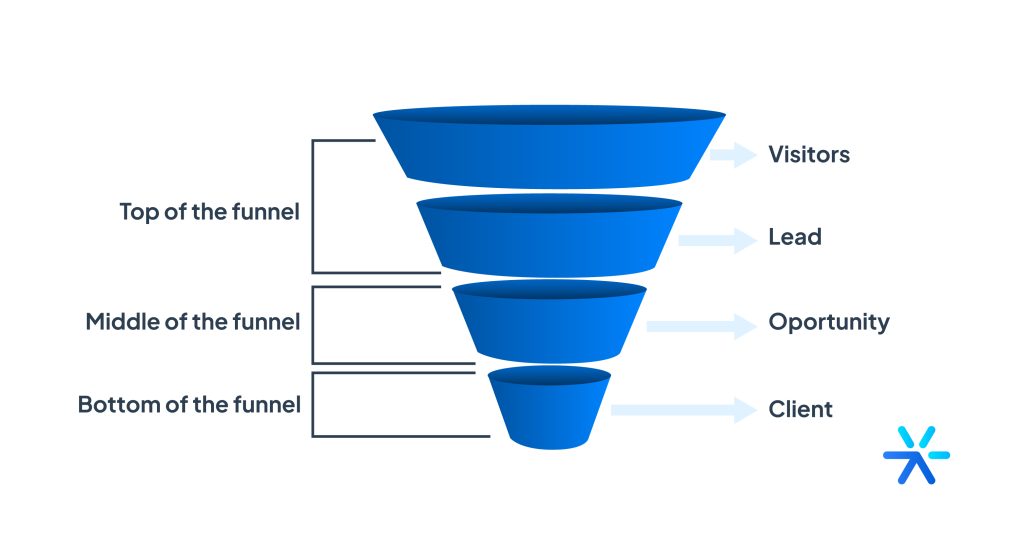
Inbound marketing is different from other strategies because it waits for the customer to reach your communication, instead of taking your communication directly to them, as is the case with outbound marketing.
Inbound leads vs. outbound leads
The difference between inbound leads and outbound leads is quite abstract. This is because, in practice, a lead is any person who leaves contact with your brand and agrees to receive communications from you in the future.
So, defining it like this, there is no difference between inbound leads and outbound leads, right?
They are all leads!
This is where abstraction begins.
Inbound leads are generated without interruption , while outbound leads are generated through resources that interrupt the browsing – or lives – of your potential customers.
This is a technical distinction, but the leads end up being a little different and require different treatments.
On your inbound platform, inbound leads are marked with which materials they accessed and which downloads they made.
This helps with lead nurturing and even at the time of sales.
Outbound leads are different.
They may have been interested in the offer but not shown any curiosity in your materials.
It all depends on your approach when converting the lead.
It is impossible, therefore, to determine specific strategies for each type of lead – inbound or outbound.
But at the same time, I strongly advise you to deal with them differently, considering the path they followed at the time of their conversion and beyond.
Understanding the needs and context of each lead can greatly accelerate sales conversion.
What are the types of inbound leads?
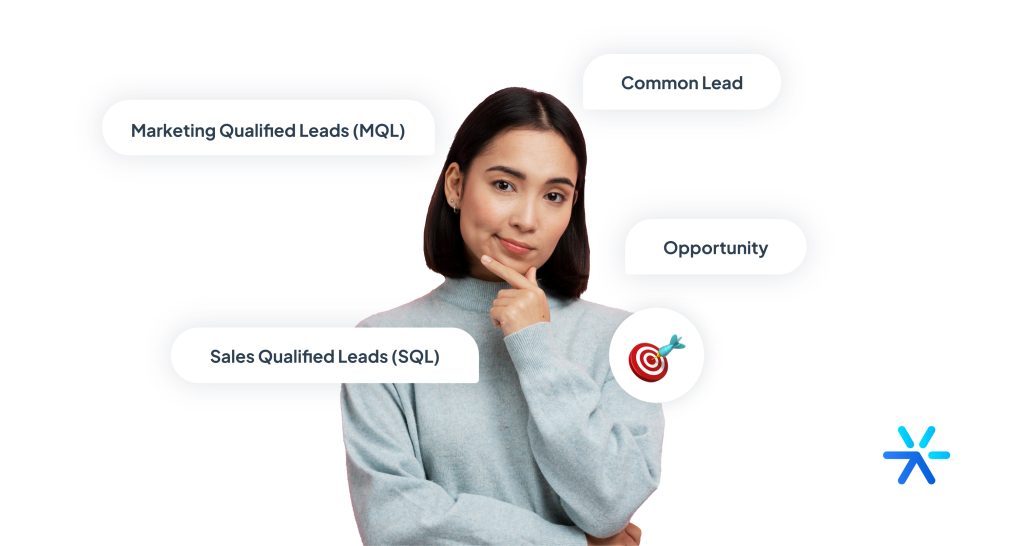
Well, so far we understand very important points about inbound leads.
Just a basic recap before we change the subject a little:
- Inbound leads are people who leave your contact and allow your brand to contact them;
- Inbound marketing is attraction marketing, which seeks to generate leads through the interests of the leads themselves;
- Outbound leads are generated from interruption marketing – campaigns on Google Ads and social media for registration , for example.
So we understand what inbound leads are, what inbound is and what its counterpart is, right?
But are inbound leads always the same?
Of course.
Throughout the sales funnel, they become other types of leads.
And it’s these types of inbound leads that we’re going to talk about now.
Follow:
Common lead
As we were all children at one time, all the customers of a company that works with inbound marketing were once leads.
The common lead is the one who had their first contact with the brand: they left their contact details and some basic information to download some material or receive an exclusive offer.
This lead also allowed your brand to contact them through the channels most commonly used by inbound marketing, especially email.
This is lead in its purest state.
He hasn’t had a qualifying job yet, so you know very little about him.
That’s why the middle of the funnel is so important: it’s through it that you’ll find out if it’s worth selling to this lead.
And what exactly is he interested in.
Qualified Lead (MQL)
The middle of the funnel will work to nurture the lead, to understand who they really are, gather more information about where they work (in the case of B2B leads), what their main pain points are and what topics interest them most.
The result of all this is an MQL – marketing qualified lead .
It’s likely that throughout your marketing career you’ll hear “qualified lead” more than MQL, but the two terms typically mean the same thing.
After MQL, the lead leaves the marketing funnel and enters the sales funnel .
Sales Qualified Lead (SQL)
As soon as the lead becomes MQL, the marketing team’s qualification work ends and the sales team’s work begins.
Important to highlight: in an inbound strategy, it is essential that the marketing team and the sales team are in frequent contact.
You will understand the reasons in this and the next item.
SQL – sales qualified lead – is the MQL that was contacted by someone from the sales team.
In practice, it works like this: your marketing department needs to deliver a constant flow of MQLs to your sales team.
Every day, your sales representatives – the SDRs – will contact these people to understand if they are a good fit for your brand.
What exactly sales representatives want to know varies from brand to brand.
In B2B strategies, for example, they want to know:
- How the lead’s company plans to use the brand’s product;
- If the lead is in a position to close a sale;
- If the company currently has the budget to close the sale;
- If the company is able to use the product easily;
- Whether the company will be able to achieve the results expected by its brand;
Among other aspects. This varies from company to company and segment to segment.
With this information in hand, the old MQL can now turn into SQL or be invalidated – i.e., they can’t buy your product now.
Once it is transformed into SQL, the sales representative now works to close the sale.
More on this in the next item:
Opportunity
The transition from SQL to Opportunity is not as marked as the ones we have seen so far.
Often, at the same time that an MQL becomes SQL, the SQL can become an Opportunity.
The term Opportunity is exactly what its name suggests: leads that, determined as SQL, accept a proposal that will expose them directly to the product.
SaaS companies, for example, offer a trial of their platform.
In the pre-internet era, paper companies sent free reams to offices and copiers “to test out.”
In some cases, this conversion from SQL to Opportunity happens immediately, in the same connection that MQL became SQL.
This is because, when the sales representative understands that that lead is a fit for the company, he can begin the sales process immediately.
He is responsible for all steps in this last stage, also called the bottom of the funnel.
How to generate inbound leads?
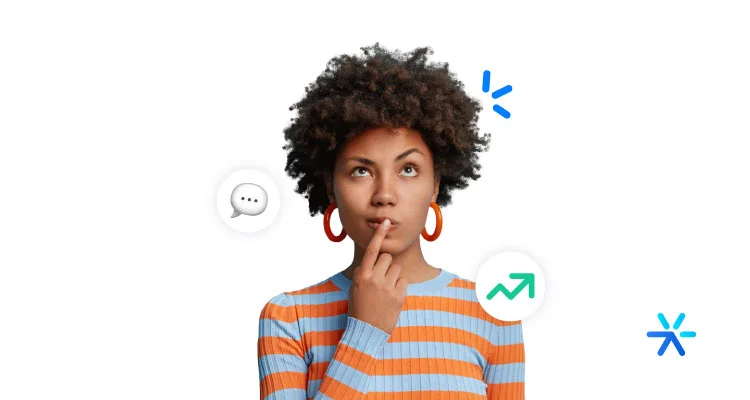
So far, we’ve talked about the theoretical definitions of inbound leads and how they move through the sales funnel.
But it’s also important to talk about where your leads come from.
What are the strategies that guarantee good lead generation?
Which are the most used within inbound marketing?
As you can see, lead generation is one of the most important strategies within inbound marketing.
Of course, closing sales is just as important.
But if you don’t have leads, where will those sales come from?
It is very common for companies new to digital marketing , especially small companies with a limited budget, to have difficulties generating leads.
This difficulty becomes a bottleneck that is difficult to overcome.
Without leads, two departments perform poorly: marketing and sales.
So let’s take our conversation to the first step of any digital marketing strategy: how to generate inbound leads?
Content Marketing
According to a study by CMI – Content Marketing Institute – 80% of B2B businesses use content marketing as their main strategy to generate more leads.
Content marketing is by far the most guaranteed tool for generating leads.
Inbound marketing itself has a huge dependence on content.
Basically, without content, there is no inbound.
It is very common for brands to use blogs as their main strategy for converting leads .
That’s because blogs, along with Google Analytics , are extremely measurable.
It is possible to see the increase in traffic happening in real time, and from there, think of strategies to transform readers into contacts.
But blogs aren’t the only way to generate leads via content marketing.
Social networks, YouTube, podcasts – all of this has great potential to be explored.
It all depends on your brand and where it is most accepted and sought after by your target audience .
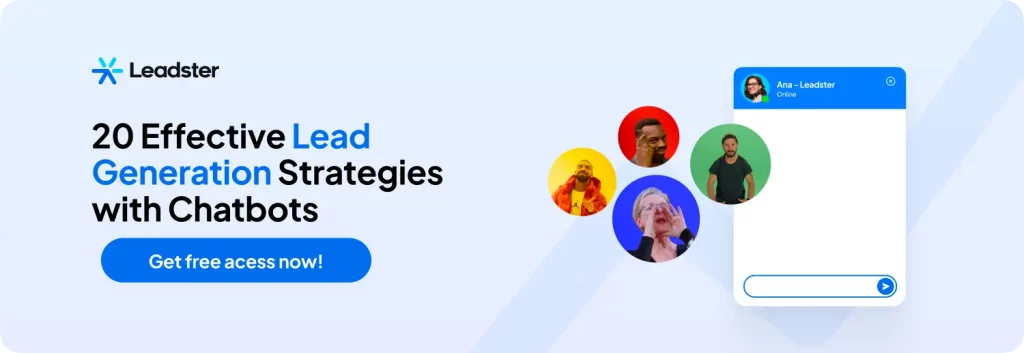
Lead magnets
A lead magnet is literally a “lead magnet”.
Your job is to guide all the traffic you gain through content marketing into lead generation.
Content marketing uses lead magnets because without them your website visitors would be just that: visitors . No name, no scarf and no ID.
Lead magnets are e-books, exclusive webinars, access to a discount, anything that catches the attention of the reader of your content and makes them leave their details – in other words, convert.
We can use this text as an example.
You may have noticed some banners like the one below.
You came here to find out what inbound leads are, so it’s likely that you’ll be interested in some material that goes deeper into this.
This is the function of lead magnets: to lead the visitor to become a lead.
This conversion doesn’t happen by chance: the visitor needs an incentive.
Direct contact (quotes, etc.)
Some leads will appear “out of nowhere”.
These are the most interesting leads to work with, and they often go straight to the sales team for validation.
This is very common in the B2B sector and service companies.
People with more urgency will visit your website, judge that you are trustworthy and request a quote.
These leads need an immediate response, and they also need instant qualification.
Many people use chatbots to carry out this urgent qualification.
Instead of filling out a form, the lead will talk to a tool that asks everything the salesperson needs to close the sale.
To better understand this type of inbound leads, I recommend reading our text on the consumer journey.
In it, you will understand that some people will follow your sales funnel exactly, while others will enter the middle and close the sale in the same way.
I recommend reading!
Outbound strategies
Well, you are not generating inbound leads from outbound marketing, but it is important to talk about this type of lead before we end the conversation about generation.
Outbound leads come, for the most part, through advertisements via Google Ads or paid social media platforms – Social Ads.
We need to talk about these leads because they are, like direct contact leads, a little different.
They didn’t come for the content, so a specific strategy, just for them, is a great idea.
Design a different, faster sales funnel that doesn’t include as much content.
What to do after generating inbound leads?

OK! We are generating our inbound leads through content marketing + lead magnets!
Remembering that this strategy, despite not requiring a large initial investment, takes time to start showing its first results.
In fact, the name of this strategy is organic traffic. We have a text on the blog that talks a lot about what to expect from it, including how long it takes to deliver your first results.
6 months after you published your first blog posts and your first YouTube videos, you started generating a good amount of leads.
First 300, then 600, and a year later there are 1,000 leads per month!
Great job!
But what to do with them?
How do you know when they become MQLs and can move on to commercial qualification?
You will discover now:
Nutrition flow
The first step to taking advantage of your inbound leads and advancing them in the sales funnel is to have an automated nurturing process.
This can be done through platforms like Hubspot, for example.
With an inbound marketing platform, you can organize all your leads and create nutrition rules.
It works more or less like this: all the leads you generate will have “triggers”.
As soon as it is generated, the platform automatically sends an email, offering more content.
As your lead becomes interested and accesses your content, you will send more and more.
And in each of these interactions, you will request more qualifying information.
Eventually, your lead will become an MQL.
But when?
How do you know if this happened?
Discover now:
Lead scoring
Lead scoring is a tactic that seeks to add “points” to each strategic interaction between your lead and your brand.
For example: let’s assume that in your nutrition flow you have two materials: how to budget for office furniture and types of wood in office furniture.
Which of these two materials has a stronger commercial appeal?
The one related to the budget, of course.
So, these two materials have a different score within the lead scoring strategy.
This is the basic conceptualization.
To learn more, I recommend reading our text on lead scoring.
Sending to the sales team
Every lead nurturing strategy needs to work with lead scoring to know when exactly a lead becomes MQL.
After a certain point, your leads no longer need to be nurtured: they need to land on a sales representative’s screen.
This is the last step that marketing has in generating inbound leads: frequent and direct communication with the sales team.
Ideally, everyone shares the same system, and the number of MQLs, SQLs, Opportunities and sales is visible to both teams.
But since we’re talking about the final ones , how about we talk about how the sales process for inbound leads works?
How to close a sale with inbound leads?
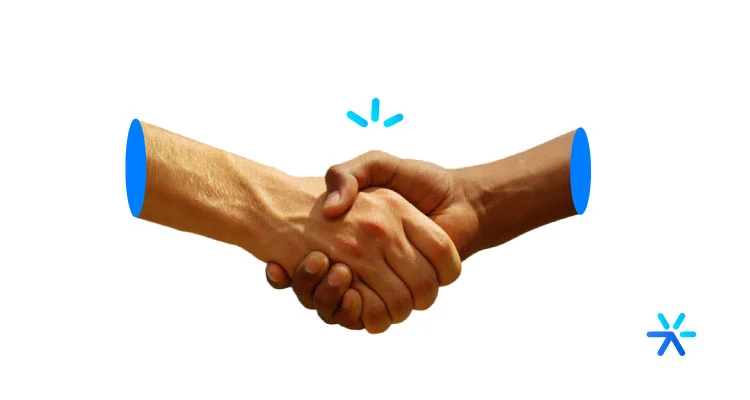
Everything we’ve talked about so far about inbound leads is important to keep your strategy working.
In fact, lead generation work is one of the main points – as we determined, without leads, there are no sales.
But generating leads is just not more important than the sale itself – after all, without sales, there’s no point in generating leads.
Therefore, to close this guide to inbound leads, we need to talk a little more about how to close sales.
Let’s go?
Well-informed connections
Even though the inbound lead strategy deals a lot with automations and communications via email, the sales team still prefers the good old call or message via WhatsApp.
This is because a salesperson’s best quality is their gift of persuasion.
In emails, to reach the same level, you need an experienced copywriter .
And even so, the connection is even more guaranteed.
In the inbound strategy, calls need to be very well informed.
The salesperson needs to talk to the lead knowing their entire interaction history with the brand.
This is actually the great brand of inbound marketing: commercial teams that are interested in your learning journey.
Product demo
The demo is the main part of your strategy, often being the main trigger that turns an SQL into an Opportunity.
In the case of SaaS companies, the demo is simpler: a complete version of your product, with all its features, for a limited number of days .
And of course, free of charge.
For other segments, creativity speaks louder.
If you work in physical retail, the demo often presents itself as a huge discount on your first purchase.
Offering the ideal demo ensures that you will talk to leads who are not only interested in what your brand has to say, but also in what it sells.
An SQL that has received a trial or other incentive in demo format automatically becomes an Opportunity.
And then another type of strategy comes in, much more direct:
Emails with commercial proposal
When you have a very large number of Opportunities to approach, it becomes a little complicated to call them all one by one.
The necessary structure is very expensive.
To give you an idea, HubSpot for many years – and perhaps even today – had a call center with dozens of workers dedicated to calling MQLs to offer demos and set up business meetings.
This structure has always been confidential on the part of the company, but was recently exposed in the book “Disrupted”, by journalist Dan Lyons.
When the volume is high, it is essential to have commercial email templates with a catalog or a proposal.
These emails can also be automated, including a high level of personalization via inbound platforms.
Meetings with decision makers
Another important point in closing sales with inbound leads is determining whether your lead has the organizational power to buy your product.
Lead generation strategies tend to be very general.
Of course, it is necessary to design personas and determine your target audience, but it is quite common to find leads who, although they share the interests of their managers, do not have decision-making power.
It is also common for this information to appear in the qualification itself, but in some cases the information may not be reliable or the question may not even be asked.
Therefore, when closing the sale, the salesperson’s first step is to determine whether their lead has decision-making power or influence within the company.
He may not be able to decide to buy, but he can get a meeting with someone who can.
Generate more inbound leads with Leadster
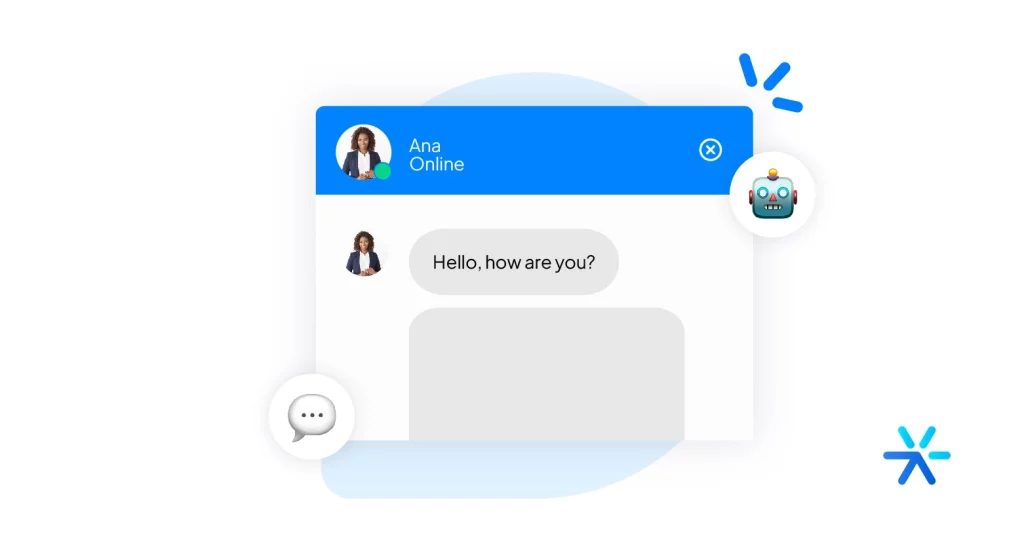
One last point that I didn’t mention throughout the text is your conversion rate.
Generating leads is not a magical, formulaic process – do X and Y and Z will happen with a 100% guarantee.
Or your banners in your texts may not be interesting to anyone in your segment , and even though you have a huge number of visitors, few become leads.
You can have the best content in the world and great lead magnets and, at the same time, also have problems converting on landing pages using forms.
And unfortunately, they are also very common on landing pages.
They are bureaucratic, they don’t allow many questions without ruining the layout, in short: there are much better ways to approach visitors.
It is possible to solve this problem and increase your lead generation by up to 3 times using a chatbot.
It tracks your visitor and recommends personalized content by page and category.
Want to know how it works?
Try Leadster and put your chatbot to work today. It’s free!
